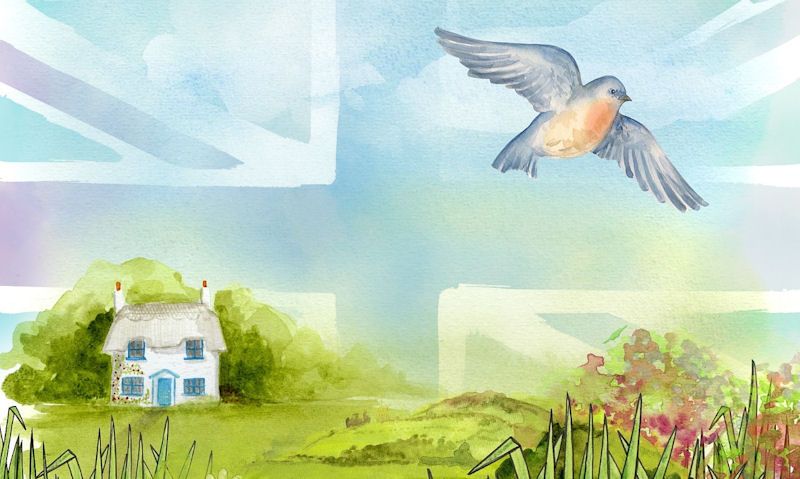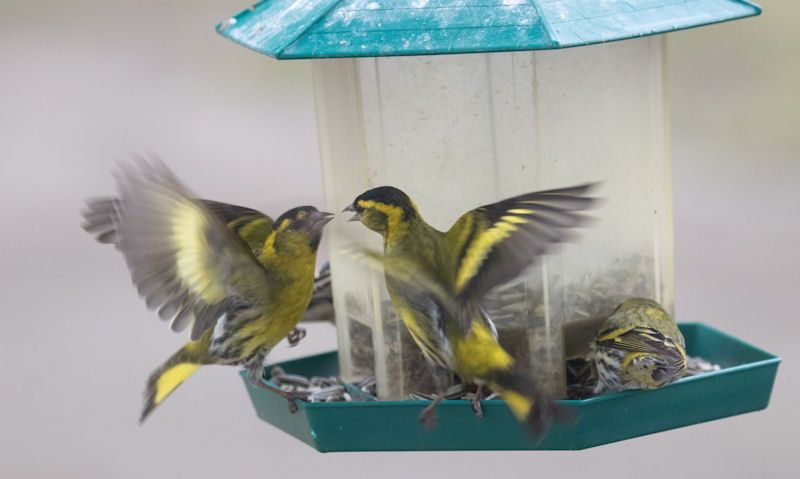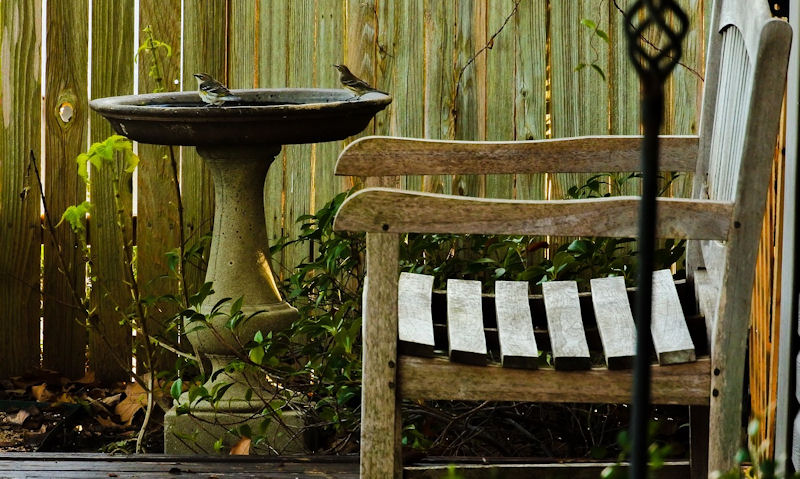Small garden birds UK guide
Our big small garden birds guide will both educate and advise you with all common small garden birds in the UK; well they might feed, nest, drink or just drop by.
Talking about small garden birds; UK small species are the Tit family to Robins and Wrens. With the smallest bird in Britain being the Goldcrest and Firecrest respectively. And well still small, Finches, Dunnocks, Sparrows, Long-tailed and Great Tits have a lengthier body and wider wingspan.
In all, there're fifteen species with a maximum fourteen centimetre body length and a wingspan no longer than twenty-four centimetres approximately.
There's not as many small garden birds as one might expect, even less so when we consider the most commonest; which narrows it down more to just half a dozen.
That's only if we consider small garden birds that are present all year round and are visitors to all gardens across Britain.
Quick Link: Click on bird name to be taken down the page to read up more detail.
Small bird size chart:
| Small Bird Name: | Length: cm | Wingspan: cm | Weight (g) |
|---|---|---|---|
| Blue Tit | 12 | 18 | 11 |
| Bullfinch | 14.5 - 16.5 | 22 - 26 | 21 - 27 |
| Chaffinch | 14.5 | 24.5 - 28.5 | 18 - 20 |
| Coal Tit | 11.5 | 17 - 21 | 8 - 10 |
| Dunnock | 14 | 19 - 21 | 19 - 24 |
| Firecrest | 9 | 13 - 16 | 5 - 7 |
| Goldcrest | 9 | 14 | 6 |
| Great Tit | 14 | 24 | 18 |
| House Sparrow | 14 - 15 | 21 - 25.5 | 24 - 28 |
| Long-tailed Tit | 14 | 16 - 19 | 7 - 10 |
| Marsh Tit | 11.5 | 18 - 19.5 | 10 - 13 |
| Robin | 14 | 20 - 22 | 14 - 21 |
| Siskin | 12 | 20 - 23 | 12 - 18 |
| Willow Tit | 11.5 | 17 - 19 | 8 - 14 |
| Wren | 9 - 10 | 13 - 17 | 7 - 12 |
Not seen in all gardens
Well all small birds we've listed above regularly visit gardens all year round, know that it doesn't always apply to every garden, with location a very important factor.
We can say for certain Robins, Tits and Sparrows will visit all gardens in the UK, well species such as the Dunnock, Finches, and Wrens may prefer a specific garden type.
If you're in a built up area close to a town centre, a council estate or busy suburbs, then its rare to see these types of birds dropping by.
Where greenery is plentiful, even in busy areas, they may stop by, but largely do not bother where lack of trees, hedges and bushes are in a garden or close approximate.
Eat from bird feeder
Know that when a common small garden bird visits your garden, its not always there to please you by feeding from your feeders or table.
In fact most small birds prefer to rummage around in your hedges, bushes or trees foraging for seeds, plants and insects.
Its just not in certain bird species nature to feed from feeders. That would be due to the bird food offered not appealing or part of there diet.
Well those birds still make your garden attractive to wild birds that eat from feeders, at least you can rely on Blue Tits, Coal Tits, Great Tits, Robins and Sparrows to do so.
Nest in the box
Good number of common garden birds will nest in your carefully sited bird box, though this list dramatically drops when we consider small garden birds only.
So if you wish for a small Tit or Robin to nest or roost in your nesting box, its quite possible none will, or worse, a larger bird species will nest in the box you didn't count for.
To insure you have every chance of a small bird nesting in your box, make it one with an entrance hole no larger than 25mm.
Its highly likely a Coal or Blue Tit will take up residence, though all small birds that use nesting boxes may be willing to give it a try.
All common small garden birds
There're up to forty common garden birds in the UK, only which fifteen we would say are small birds; with a short body length and a not much wider wingspan.
Taking into consideration the birds body length - which is beak to tail tip - any species under fourteen centimetres would be small.
Though we do have birds here that are that size or larger as we don't wish to leave out the most important birds we consider small still (i.e. Robins, Long-tailed Tit, etc.).
A wild bird of this size would be classed as medium size in many cases by experts.
As a rule of thumb, most common birds of a small size would measure around nine to twelve centimetres in length, with a wingspan of thirteen to seventeen centimetres.
Overall weight of the bird reflex that of small or medium sizes.
Blue Tit
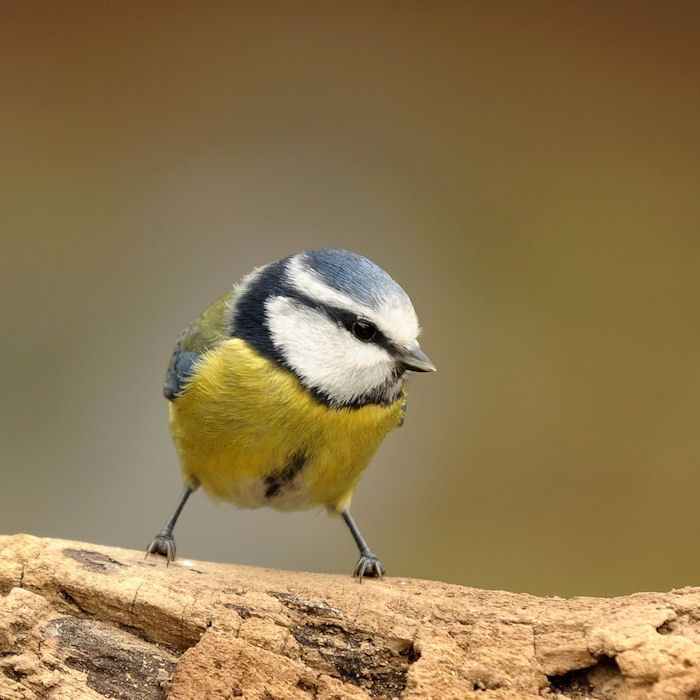
One of the most liked visitors to the garden, particularly because of its pure beauty, but another due to its dainty size.
Measuring only twelve centimetres in length, the Blue Tit can still have a wingspan that stretches out to a whopping eighteen centimetres.
Only weighing eleven grams, this small garden bird is highly recognisable in the yard due to its light blue colouring and yellow underside.
Small as it is, you might be able to encourage it to land on your hand to feed as the Blue Tit is known to, with many photo's demonstrating just that.
Simply offer it crush peanuts or small chopped up fruits to tempt it to land on your palm.
In your garden expect the Blue Tit to feed on your bird table, hanging bird feeders to even nesting or roosting in your bird box.
Bullfinch
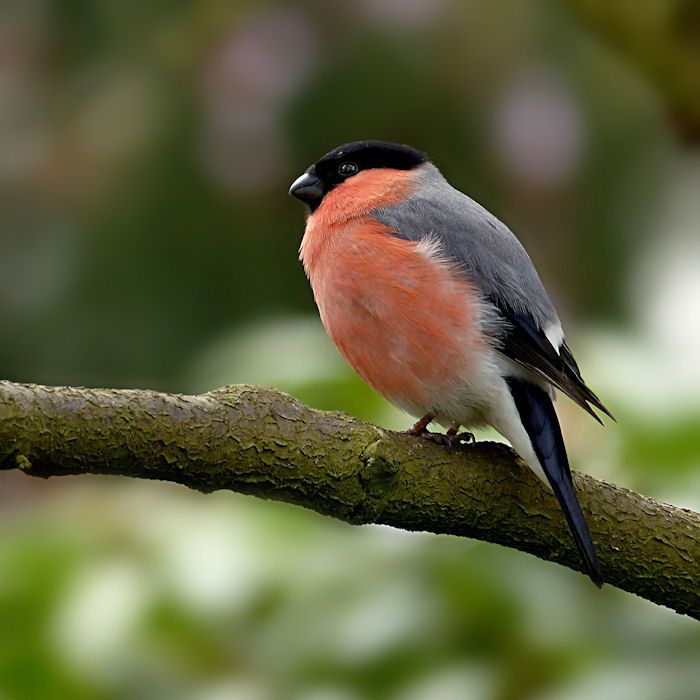
Tough one to get to visit your garden for even a short spell, as its known to land only briefly, made harder to spot as its incredibly agile.
Larger side of small birds with a body length averaging 14.5 to 16.5 centimetres, with a huge wingspan of 21 to 27 centimetres.
The Bullfinch size is also reflected in its total body weight of 21 to 27 grams, so well its still small, it still on the medium scale.
Not one to take to bird boxes nor are you likely to see it feed off the bird feeder.
If it ever settles down to feed, its likely to be off the ground foraging from flowers. Ideally your garden would need to be close to a wooden area with lots of trees.
Chaffinch
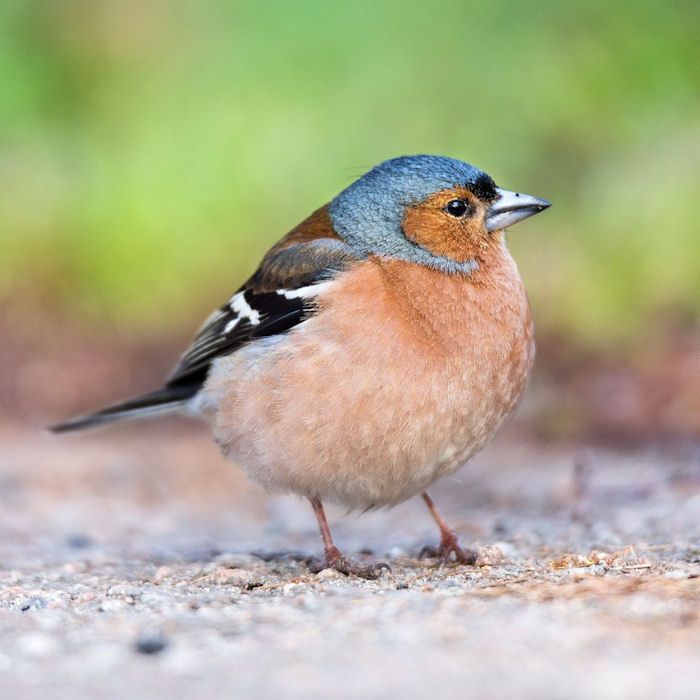
One of the largest but still small garden birds with a body length measuring anything from 14 to 14.5 centimetres, recognised from its white patchy, black feathers.
Add to the 24.5 to 28.5 centimetre wingspan, this is quite a sizeable garden visitor.
If your garden is nearby a wooded or greenery area filled with scrubs and hedgerows, then it will more than likely be a visitor, but only a rare one.
If you know the Chaffinch is close by, then you may be able to get it feed on your nut or peanut bird feeder, but will only do so at quieter times of the day.
If its an adult male Chaffinch in the garden (pictured) features include the black and white wings with the a blue head with a deep red back.
Likewise, spotting an adult female Chaffinch has the same wing characteristics, only the head and back is more a dirty, deep yellow colour.
Coal Tit
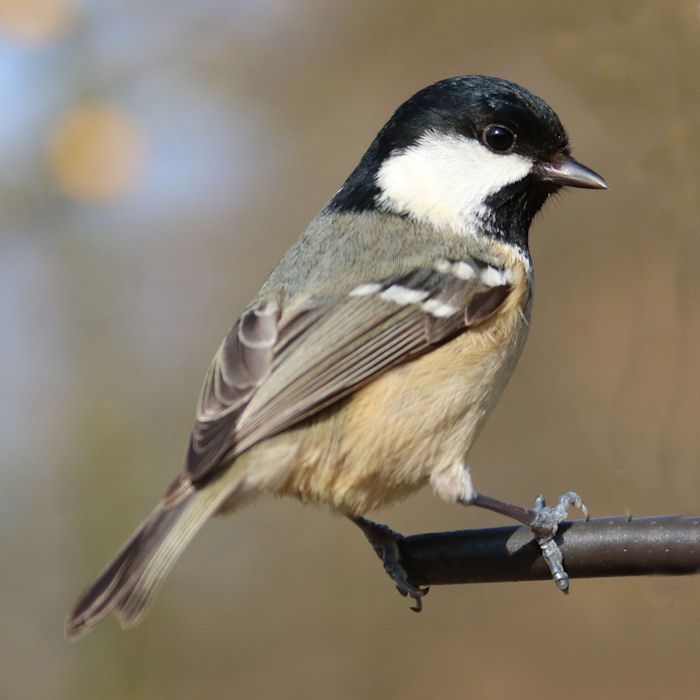
Still highly similar to that of the Blue Tit, only the Coal Tit is smaller by up to one or two centimetres in body length and wingspan.
The Coal Tit measures 11.5 centimetres in body length, with a wingspan varying from 17 to 21 centimetres, so far bigger than the Blue.
Familiar habits well in the garden as the Coal is willing to nest in the bird box and certainly happy to feed off multiple bird feeders offering an assortment of food.
Peanuts being the favourite; they would be happy to try seeds, fat balls and suet blocks.
Its not hard to distinguish the Coal among all the Tit family, this one having a glossy black crown, white cheeks and a grey belly plumage.
Dunnock
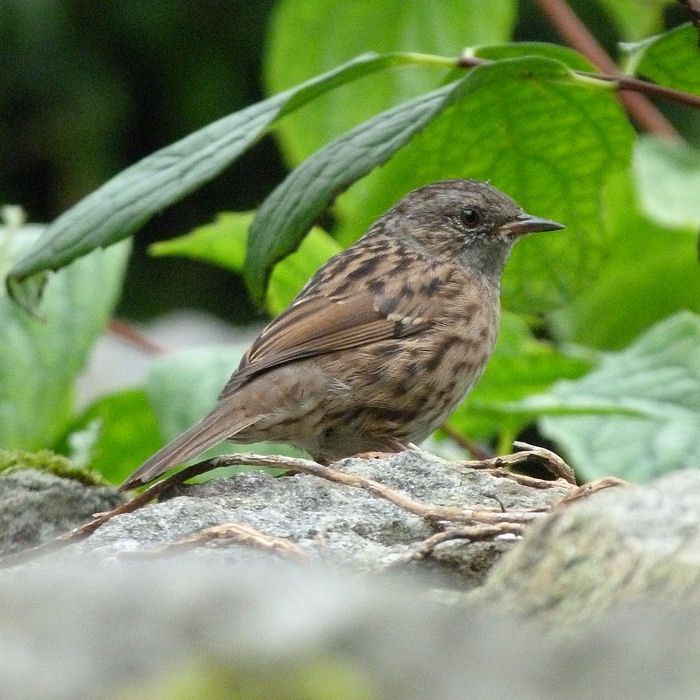
Common bird if your garden has a large open lawn with plenty of bushes and trees near by, and is more rare without these factors as you'll see this one less often or not at all.
The Dunnock is a small but large bird with the average fourteen centimetre body length.
With the wingspan averaging anything from 24.5 to 28.5 centimetres.
Attract the Dunnock by throwing out mealworms or bird feed over the lawn as they like to feed off the ground, so where insects are not plentiful or possible on a patio garden, the Dunnocks will take to bird feed.
Likely to land and feed on the open bird table rather than underneath it, but its less likely to try and feed on the hanging bird feeder.
Dunnock's will never nest in the wooden bird box, preferring to make there own.
Firecrest
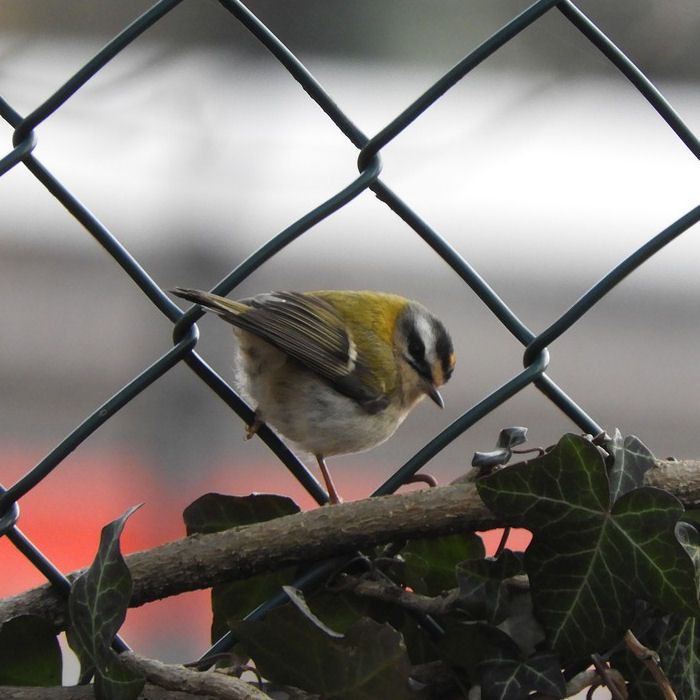
Europe's smallest garden bird and only half the weight of that of a Blue Tit.
With a body length of just nine centimetres, and a wingspan that reaches no further than 13 to 16 centimetres.
Reflecting its miniscule size, the Firecrest's weight is only 5 to 7 grams, so is lighter than all garden birds and in many cases, only half the weight of most.
Not one to be amongst all small garden birds, but likely to stay lonesome by weaving in and out of bushes, trees and plantation.
Firecrest will unlikely to feed off the bird table nor is it a bird that nest in boxes, which is also true for the Goldcrest.
Similar but not identical to the Goldcrest, which we have up next...
Goldcrest
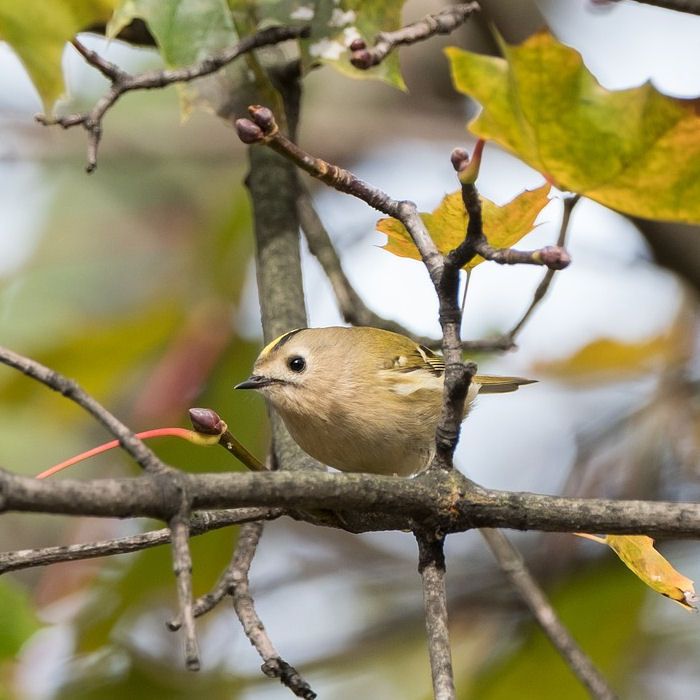
All behavior attributes in the Firecrest is also a trait in the Goldcrest.
Well the Firecrest size varies widely, the measurement of the Goldcrest is more a consistent size.
Nine centimetre length from the tip of its beak to the tip of its tail, which is always the length you'd find the Goldcrest, with a consistent wingspan of fourteen centimetres.
Consistency is also present in the weight of these birds, with most tending to be just six grams.
If a Goldcrest visits your garden then it will need plenty of trees and bushes to dart between.
It will be hard to spot the difference between the Goldcrest and Firecrest as they never settle, but one major distinctive feature is around the eye.
Well Firecrests have a black streak though there eyes, the Goldcrest eyes do not have this black marking; with there eyes a perfect round black gloss.
Great Tit
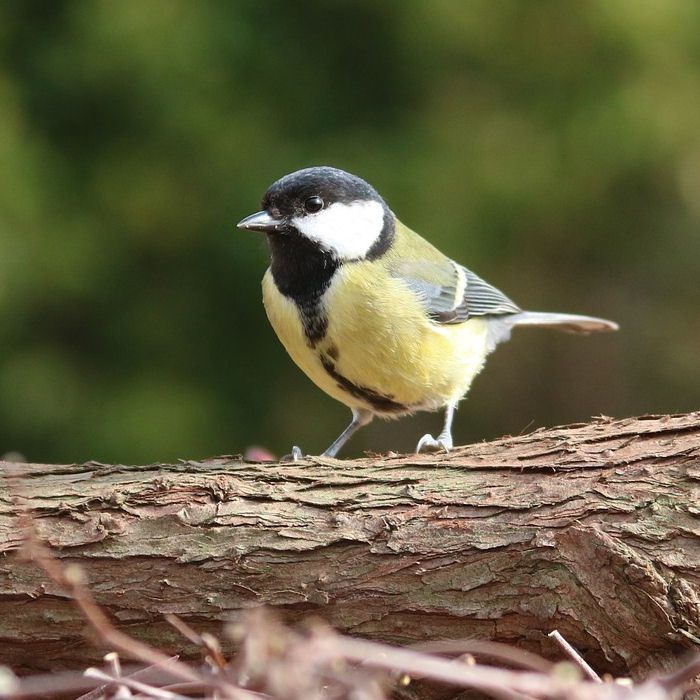
As we associate the Tit family being the smallest bird species of them all, its hard to believe but the Great Tit is rather on the larger end of small birds.
It has a body length similar to that of the Robin and Sparrow at fourteen centimetres, with a wingspan of 24 centimetres, making it larger than the birds mentioned so far.
If you can't distinguish the Blue Tit and Great Tit apart, simply look to its glossy black head with the streak carrying on down its underside.
Its also recognisable from its white cheeks against the black with a greenish back.
Its a Tit so would feed off the table or hanging bird feeders with peanuts or fat balls, well most certainly feed off the ground if need be.
Its a larger bird than the Blue and Coal so it would take to a bird box with a 28mm entrance hole.
House Sparrow
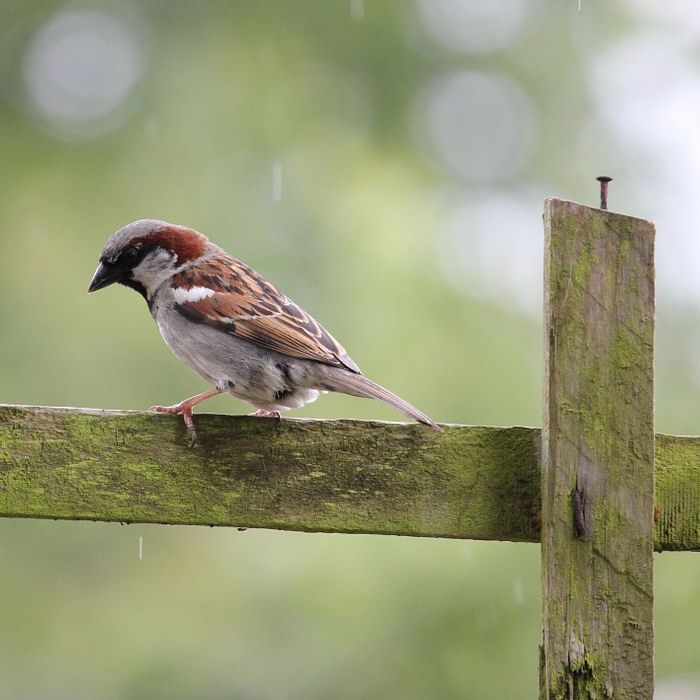
You could say Sparrows are in big numbers with plenty to go around for every garden in the UK, and its because of this you'll have no trouble attracting them.
We're of course talking about the distinguish colouring of brown, black and a grey underside that helps us identify the House Sparrow from a far.
Regularly feeding with the Tits at the bird table or feeders, drinking out of the water bowl or taking a bath.
When its not feeding in your garden it will take to a specially designed colony bird box with up to three compartments, or a few boxes positioned side by side.
Tough little bird that is not shy of people, and is willing to make the noise to warn off birds when feeding.
Long-tailed Tit
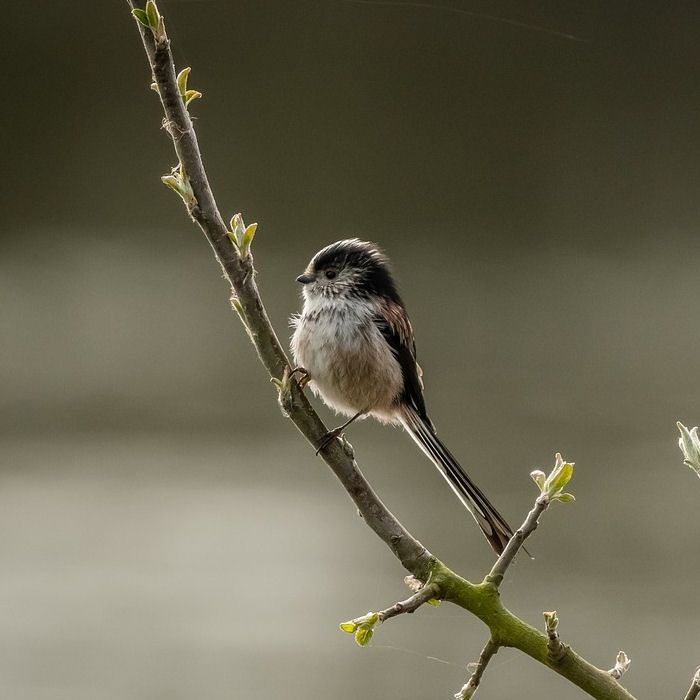
Distant relation to the common Tit, the Long-tailed Tit is as lengthy as the Great Tit, with a wingspan that is much shorter. And remarkably, still only half the weight.
If you're lucky to have a visiting Long-tailed Tit in your garden then its likely to be one with lots of bushes and trees near by.
The Long-tail is not one to use a bird box but it will be willing to feed on your peanut feeder or the hanging fat balls, preferably those ones you get in nets to hang.
Of all the Tit family, you'd recognise the Long-tailed Tit from a far, well it inherits the shape of a typical Tit, the mostly white body with black wings can only be contributed to the Long-tail.
Interestingly, the British Long-tail Tit has a black pattern on its face.
Marsh Tit
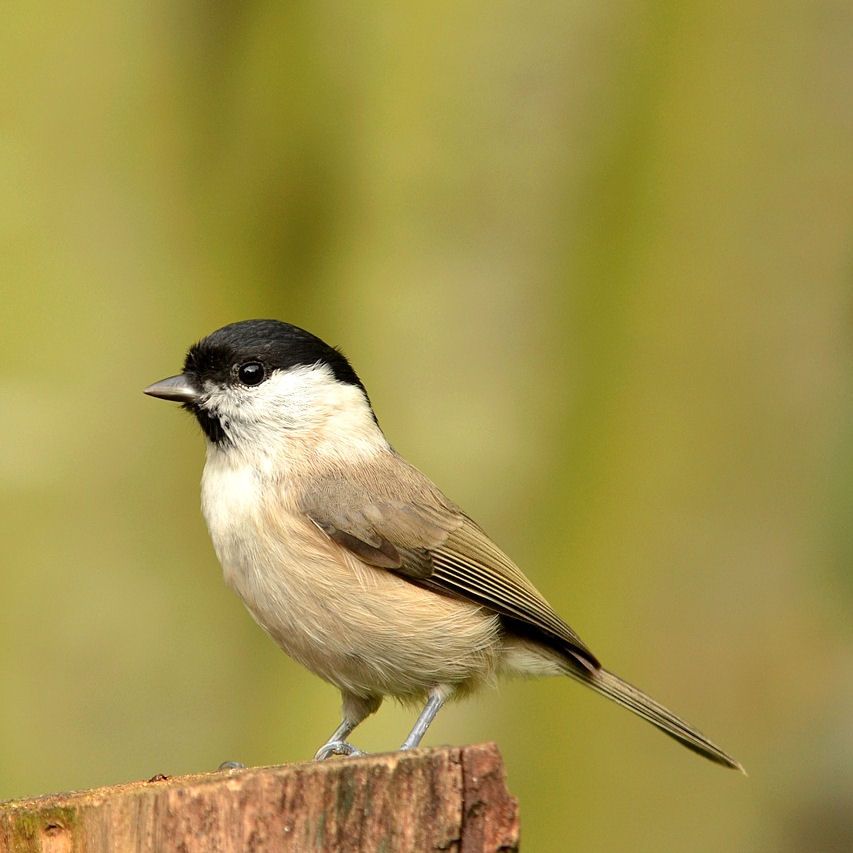
Over a hundred years ago the Marsh was separated from the Willow Tit has two completely different birds, though there appearance is identical, there's one tell.
Well the Willow has a broader head, this Marsh Tit has a smaller, rounder head.
Both birds have 11.5cm long body, well the Marsh's wingspan is greater. Its still hard to differentiate the birds with even the experts finding it hard.
This is garden visitor and will be willing to feed off your bird table and hanging feeders, will also nest in a bird box.
And like the Willow, its possible to put soft material into the bird box before it has a chance to nest, but it must be possible for the Marsh to remove it if wishes too.
Robin
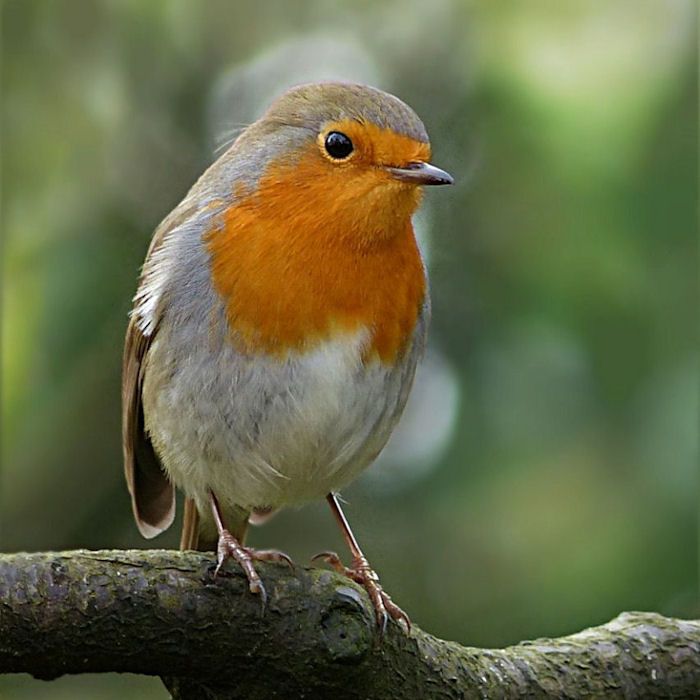
Small garden bird watchers always look out for the red-chested Robin to make an appearance, which is possible as they're resident all year round - not just at Christmas.
Small but still on the larger size, in a medium fourteen centimetres length and a wingspan varying from twenty to twenty-two centimetres wide.
Regularly seen feeding on the bird table or hanging fat ball feeder, they also tend to be alone among the plentiful Tits and Sparrows.
They will also take to an open fronted bird box hidden behind vegetation.
Amazingly, you could also encourage a Robin to feed out of your hand, will walk up to your feet, and may very well enter your home.
Siskin
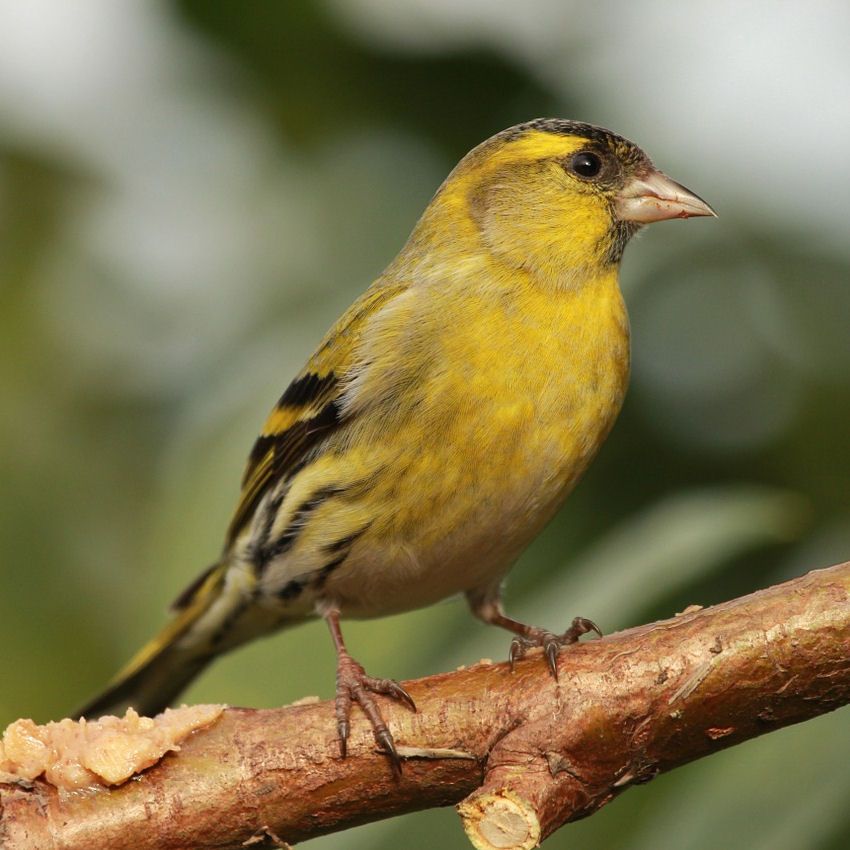
Siskens measure approximately twelve centimetres long with a twenty to twenty-three centimetre wingspan - well weighing twelve to eighteen to pounds.
And well they might not be the smallest of garden birds, unfortunately the size had made them popular across Europe which resulted in them by captured before caging.
Well this practice still exists, it is now not a commonplace.
Visitor to your garden if you're located near woodlands, well the Siskin will venture out to feed on peanuts and fat balls from your feeders.
Cleverly, they're able to use there feet to pull the feed closer to bring it within reach.
Willow Tit
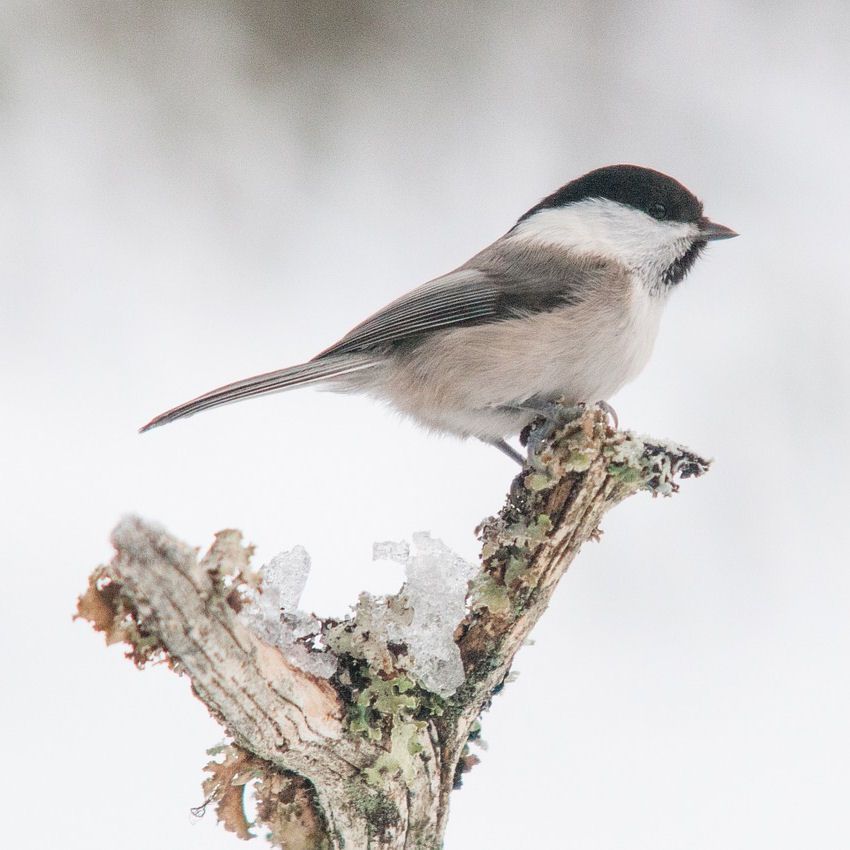
Revealed as a new species in the early 20th century, well it was separated from the very similar Marsh Tit, the eating and nesting habits vary differently.
From beak to tail the Willow Tit measures 11.5cm in its full body length, well the wingspan can open up from 18 to 19.5cm.
And well it can weigh eight to fourteen pounds, it can be lighter or heavier than the Marsh Tit.
Its quite possible to see a Willow Tit nest in your garden bid box, and if its a Willow you know is nesting, you can line the bird box interior with soft materials that can be removed.
You can also expect the Willow Tit to visit the various bird feeders around the garden.
Wren
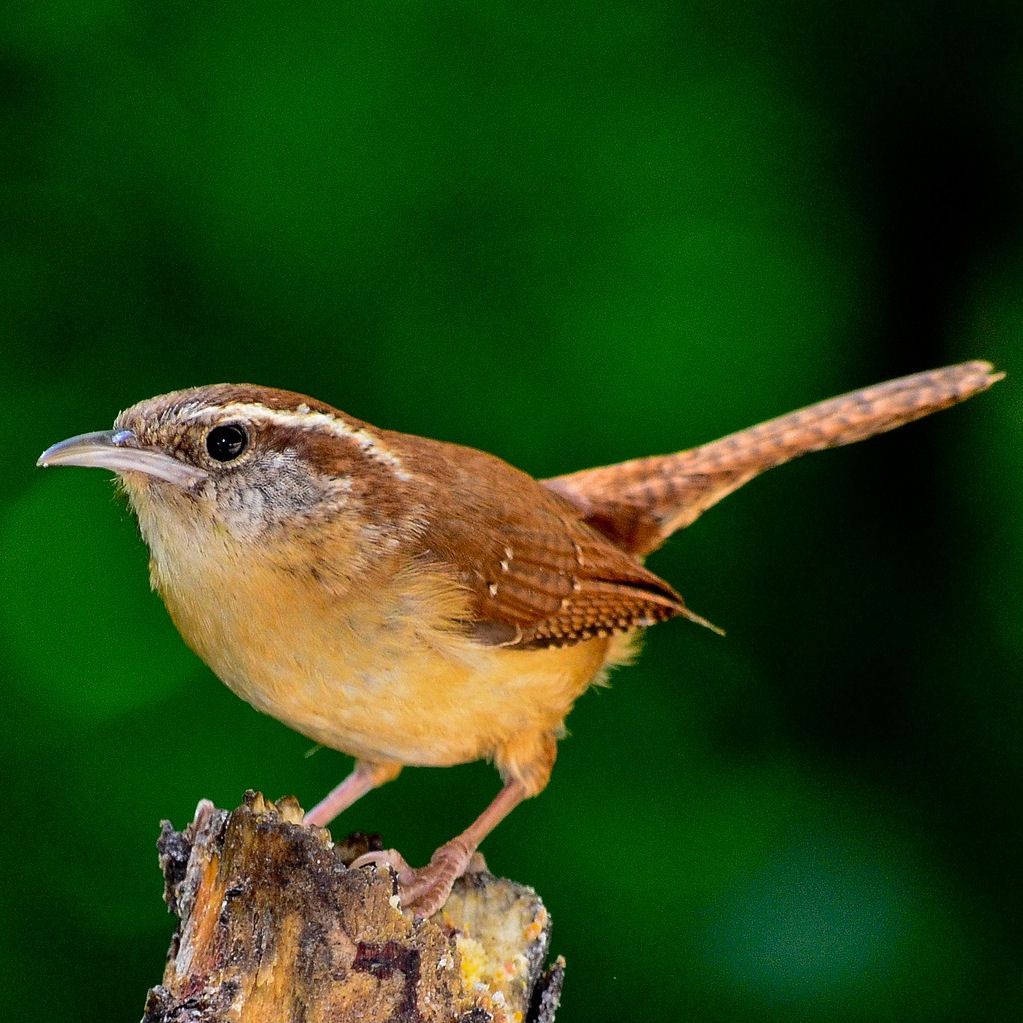
After the Firecrest and Goldcrest, the Wren would be the smallest wild bird species found in the UK, where it is widespread and often seen in gardens.
Its length is just nine to ten centimetres, with a wingspan varying from 13 to 17cm, weighing seven to twelve pounds.
The Wren's appearance also looks small, stumpy-like with its head overwhelming the size of its body, which makes it an easy identifiable bird in the garden.
Wrens are likely to eat off bird feeders well preferring mealworms to peanuts, but may be willing to try the fat balls.
If you have Wrens visiting your garden then mealworms are the food of choice.
Nesting will happen in bird boxes designed with an open front, positioned low down in vegetation with little disturbance.
